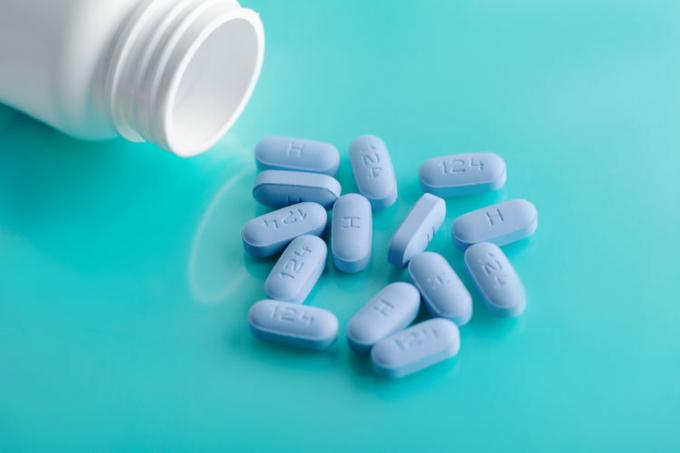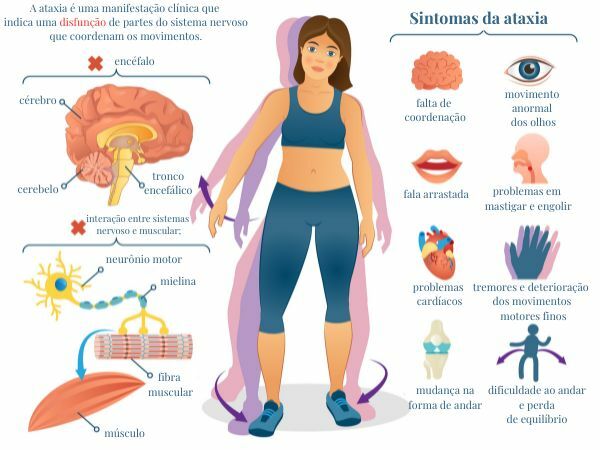This month the national campaign is held red december about the prevention of HIV, the virus that causes Acquired Immunodeficiency Syndrome (AIDS). Other sexually transmitted infections (STIs), such as syphilis, hepatitis B and C, genital herpes, chlamydia, among others, are also targeted by the campaign.
Red December intends to promote awareness actions, as well as inform about the measures for prevention, care, protection and promotion of the rights of people living with HIV.
Law nº 13,504, of 2017, is responsible for officially establishing the campaign in the country. The initiative gives continuity to the works and actions developed in the World AIDS Day, the 1st of December. This date was created in 1988 by the General Assembly of the United Organizations (UN) and the World Health Organization (WHO).
Know more:what is aids, stages of infection and treatment
What is the difference between HIV and AIDS?
It is common for people to think that HIV and AIDS are the same thing, but the terms refer to different conditions.
HIV is the human immunodeficiency virus, which has the ability to infect humans asymptomatically for years, says infectologist Klinger Faíco.
AIDS is the Acquired immunodeficiency syndrome. The person living with HIV who is not submitted to treatment can develop into AIDS. In this condition, the immune system is compromised and opportunistic diseases begin to appear, according to Klinger.
The infectologist says that with the advancement of medication and treatment to control the HIV virus, the cases of people affected by AIDS tend to reduce.
He states that people living with HIV, if they are receiving adequate treatment, should not progress to the stage of AIDS.
People living with the virus usually do not have any symptoms. On the other hand, those who have AIDS can lose weight, fever, weakness, hair loss and sores on the skin, highlights infectious disease specialist Lissa Rodrigues.

Credit: Personal Archive
Klinger also mentions that AIDS symptoms are directly related to symptoms arising from opportunistic diseases that may occur, such as pneumocystosis, neurotoxoplasmosis and Kaposi.
Check also:diseases caused by viruses
Challenges in coping with HIV/AIDS
The main challenge in facing the HIV virus and AIDS is the prejudice, points out Lissa.
We should face HIV like any other infection, but all the stigma and prejudice over HIV ends up making it difficult to early diagnosis, because if people are afraid to go for the test, those who take the test end up denying the diagnosis and postponing it treatment. Most of the time due to lack of social and family support.
Lissa Rodrigues - Infectologist doctor
Check out the comment by infectologist Klinger Faíco on the topic:
The Red December campaign is important, in Klinger's perspective, to discuss an issue that is taboo in society. "HIV does not kill, but prejudice does! It is important that we take this debate on the quality of life that the patient has, the progress in treatment, the possibilities of prevention, all of this to make the population aware, welcome people living with HIV/AIDS, demarginalize these people who need care and attention", complete.
HIV transmission
HIV transmission can occur in the following ways:
Unprotected sexual intercourse;
Vertical transmission (from mother to child);
Accidents with biological material;
Blood transfusion;
Syringe sharing.
Mother-to-child transmission can happen during gestation, childbirth or breast-feeding.
See too: AIDS treatment and cure
HIV/AIDS treatment
The treatment to control the HIV virus, and consequently prevent the evolution of aids, is done by drugs known as antiretrovirals, points out Klinger.
The infectologist says that in the past the amount of medicine was greater and they were not as effective as the most recent ones.
Currently, there are two pills on average that can allow a person to stay undetectable. Which means that the amount of virus circulating in the blood it is very low and the person does not transmit it.

Credit: Shutterstock
The infectologist doctor Lissa Rodrigues says that the medication has few side effects and that they are generally mild.
The measurement is distributed free of charge in Brazil by the Unified Health System (SUS).
Monitoring is done in different spaces, depending on the city, such as the Testing and Counseling Center (CTA) and the Specialized Assistance Service (SAE).
Check out information about services and rights related to people living with HIV
The SUS guarantees complete treatment for people living with HIV, reinforces Faíco. Among the services are: laboratory tests, consultations with infectologists, evaluation with other specialties, psychological and nutritional support and medication distribution to be continued.
Read too:what is SUS, history, services and their importance
HIV prevention
The use of condom It is a measure to prevent HIV infection. For Klinger, it is interesting to adopt what is called combined prevention, which means several associated actions that strengthen prevention.
These are preventive actions:
Regular testing for HIV and other STIs;
Hepatitis B vaccination and human papillomavirus (HPV);
Use of male and female condoms, as well as lubricating gel;

Credit: Shuttestock
Infectologist Klinger Faíco cites two more recent strategies that are very important in HIV prevention.
Pre-Exposure Prophylaxis (PrEP): It is a drug that prevents HIV infection by almost 100%. The medication is available for men who have sex with men, serodiscordant couples (one living with HIV and the other another does not have the virus) and sex workers who have had unprotected sex in the last few months. It is possible to find the medication both in the public network and in pharmacies, but medical supervision is required.
Post Exposure Prophylaxis (PEP):used when there was unprotected sexual intercourse, by victims of sexual violence and victims of sharp objects. Use is for 28 days and must be started within 72 hours after the situation.
HIV and AIDS cases

Do not stop now... There's more after the publicity ;)
Sexually Transmitted Infections (STIs)
The Red December campaign also warns about other sexually transmitted infections, such as:
Syphilis
Hepatitis B and C
chlamydia
genital herpes
According to Klinger, Brazil is currently facing a syphilis epidemic that must be considered carefully. Cases are increasing and it is necessary to alert the population about the need to carry out tests, treatment, as well as the use of condoms, he argues.
Check out:what is syphilis, symptoms, transmission and treatment
lucas afonso
Journalist



